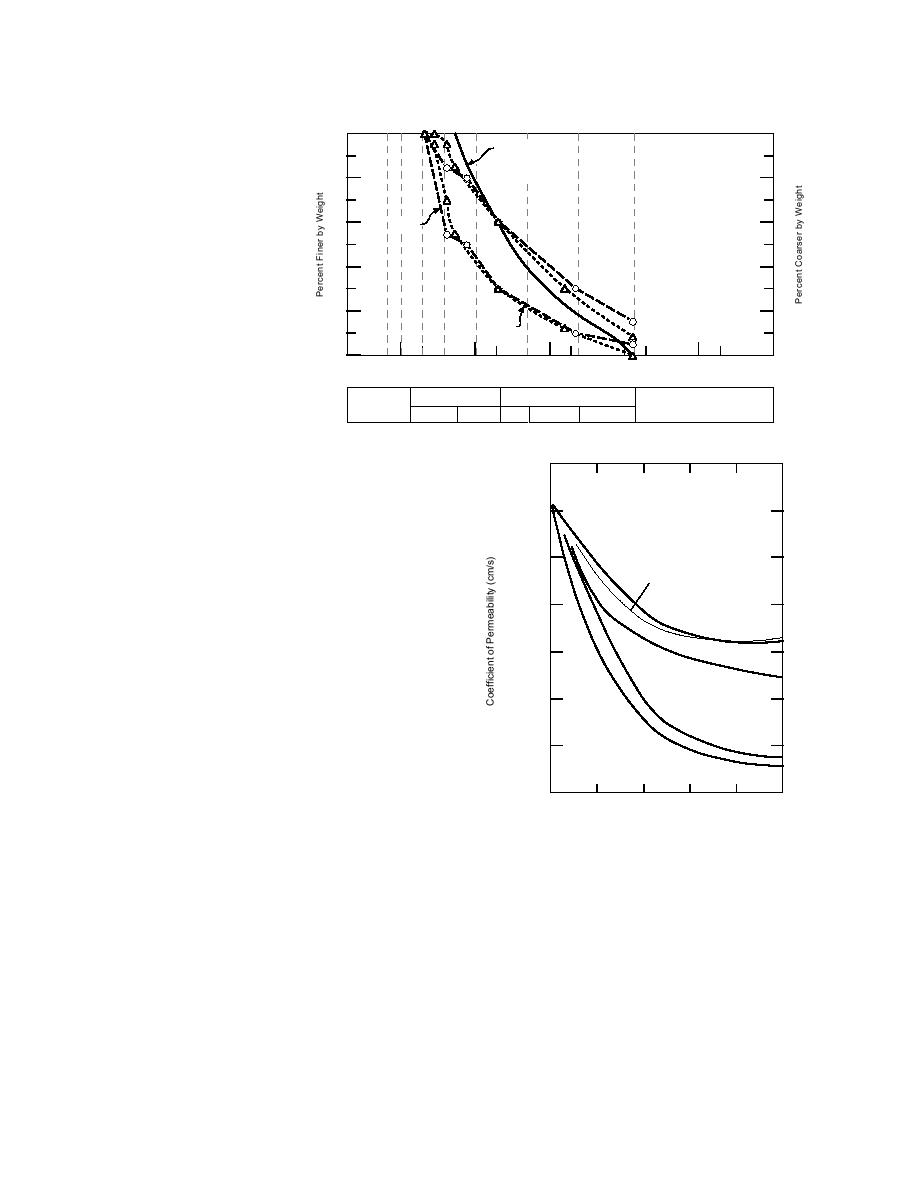
U.S. Standard Sieve Numbers
Hydrometer
6" 4"
2"
1"
10
40
200
3/8"
100
0
Gradation Used
in Barber &
Sawyer Tests
80
20
60
40
P-208
40
60
20
80
P-209
100
0
100
10
1
0.1
0.01
0.001
Grain Size (mm)
Figure 14. Grain size distribution
Gravel
Sand
limits for P-209 crushed aggre-
Cobbles
Silt or Clay
Coarse
Fine
C'rse
Medium
Fine
gate base course.
3
35 x 10
How quickly a base course will drain essen-
tially depends on its coefficient of permeability k,
4
35 x 10
effective void ratio (or porosity), in-situ density,
and soil structure. The permeability of soil is usu-
ally presented as a function of its fine contents.
35 x 10 5
Silica
However, the type of fines also affect k. Barber and
Sawyer (1952) reported k values of graded aggre-
35 x 10 6
gate materials as a function of gradation, fine con-
tents, and type of fines.
The effect of gradation on the permeability of
35 x 10 7
graded aggregates is shown in Figure 13. As the
Loam
amount of material passing the finer sieves is
Silt
35 x 10 8
reduced, the permeability of the material increases
significantly. The gradation with a k = 3.5 103
Clay
cm/s (1.148 104 ft/s) (0% passing no. 200 sieve),
9
35 x 10
which was considered to be the gradation of typi-
cal highway base course material, is similar to the
P-208 and P-209 FAA aggregate material (Fig. 14).
35 x 10 10
0
5
10
15
20
25
Figure 15 shows the effect of fine types on the per-
Percent Passing 200 Mesh Sieve
meability of the soil. The k values given in Table 13
Figure 15. Effect of fines on permeability of graded
were estimated using Figure 15. We assumed that
aggregate (1 cm/s = 0.033 ft/s) (after Barber and Saw-
all the fine materials in the P-208 and P-209 base
yer 1952).
materials were silica based and, in the P-213, they
were predominantly clay. Since this criterion is
based on the amount of material passing the no.
Using k and the Casagrande and Shannon
200 sieve, the k value for the P-154 subbase materi-
model for drainage, we determined the number of
al was the same as that of the P-208 base material
days for the basesubbase to drain by 20, 50, and
(Table 13).
99% (Table 14). On the basis of limited test data, for
Typical base course k values reported by Casa-
a well-graded base course material, we used an ef-
grande and Shannon (1951) ranged between 27
fective porosity of 0.15 (Allen 1991) in the analysis.
104 and 1 106 cm/s (8.86 105 and 3.3 108 ft/
In addition three base or subbase thicknesses were
s) for base course materials with fines in the range
considered--15, 61, and 152 cm (6, 24, and 60 in.).
of 3 to 5%. The values in Table 13 are considered to
Three levels of drainage (U) were considered. The
be reasonable.
20% drainage level describes the material at a sat-
19



 Previous Page
Previous Page
